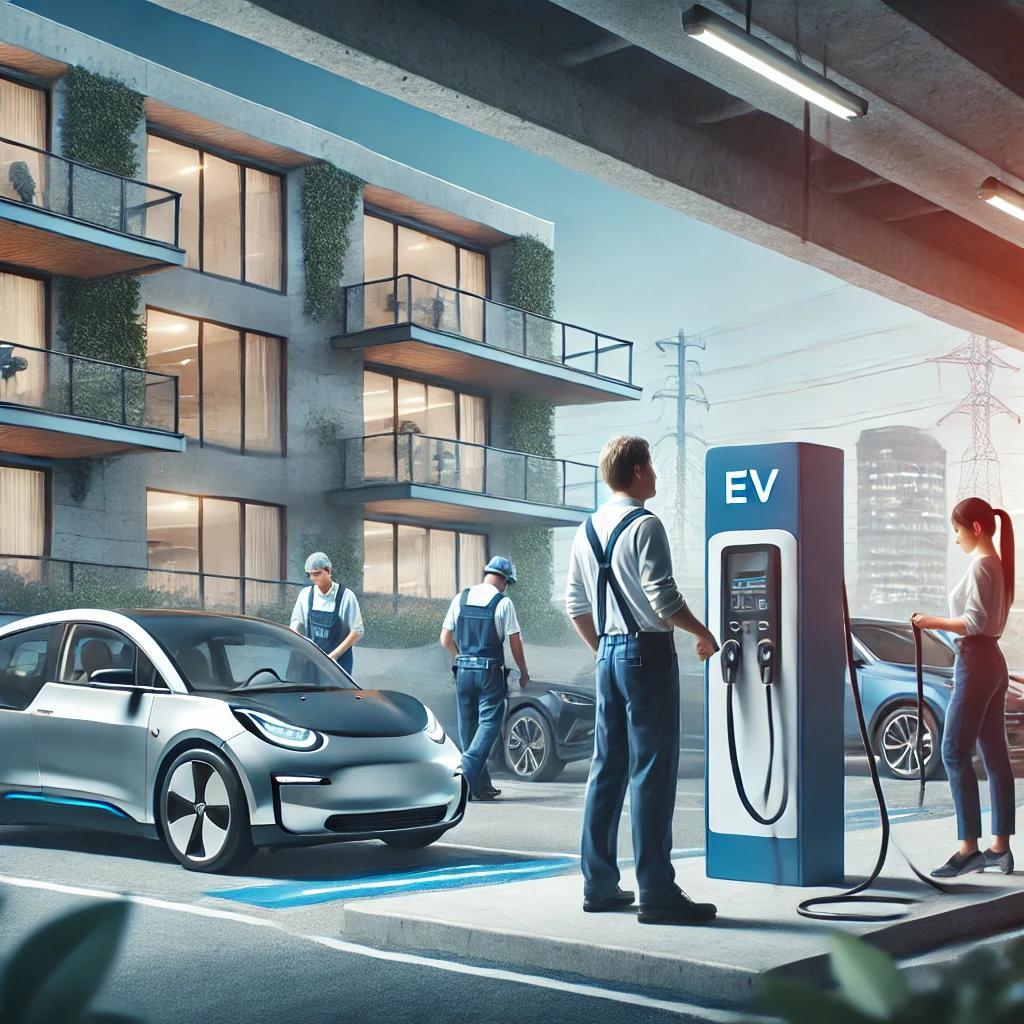Six Steps to Introduce EV Charging in High-Rise Condos

Electric vehicles (EVs) are becoming increasingly popular. In 2021, electric car sales reached a remarkable milestone of 6.6 million, nearly twice the number sold in 2020. The appeal of fewer visits to gas stations, minimal maintenance, and the potential for emission-free driving is drawing many towards electric vehicles.
Over recent years, EVs have shifted from being rare to commonplace. They are now a topic all communities, including high-rise condos, need to be prepared for.
With the increasing emphasis on energy conservation and efficiency, it's crucial for communities to prepare for more requests for EV charging stations and the associated energy consumption. While some luxury condos already have these facilities, many still lack even basic electrical outlets near parking spaces, let alone the advanced infrastructure needed for charging stations. This can lead to challenges involving infrastructure, legalities, management, and aesthetics.
Experiences from various communities show that initial investments in EV charging can significantly increase the number of electric vehicle owners in the vicinity. This acts as a catalyst, attracting more residents who are interested in such facilities.
If your high-rise condominium is ready to explore the installation of EV charging stations, the following steps provide an overview of the process and what can be expected.
1. Engage with Stakeholders
When parking arrangements are changed, multiple parties need to be involved in decision-making. Aside from the EV owners, consideration must be given to the building management, association, other residents, utility companies, and relevant local and federal laws. Reviewing current parking policies and electrical capacity, as well as assessing resident interest in EV accommodations, is essential. Forming an advisory committee and consulting with experts such as property management companies or contractors can be highly beneficial.
2. Decide on Financial Responsibilities
Determining who covers the costs of installing EV charging stations is crucial. Installation can vary greatly in cost depending on factors like equipment, permitting, labor, and potential landscaping repairs. Costs could be borne by the EV owners or shared among multiple residents. Alternatively, the association might handle major expenses and offer the EV infrastructure as a community amenity, akin to a pool or gym. It is vital to review community documents and local laws before finalizing any financial plans.
3. Handle Energy Costs
With several EVs using charging stations, management of energy costs becomes necessary. Options include instituting a flat monthly user fee, with the association covering electricity costs or sub-metering EV consumption. Sub-metering requires administrative effort but ensures users pay for their own consumption. Alternatively, a charging management service can handle billing, albeit with additional administrative fees, freeing up staff to focus on other tasks.
4. Evaluate Capacity and Equipment
It’s crucial to consult with electrical engineers, electricians, and utility representatives to assess existing systems and plan necessary upgrades. Installing a single 110V charger is simple, but accommodating numerous 220V fast chargers is a different challenge altogether. Decisions on the types of charging stations allowed by the association must also be made.
5. Reassign Parking Spaces if Needed
Due to infrastructure limitations, reassigning parking spaces may be necessary. While this can be met with resistance, open communication can reduce conflicts. Placing EV charging spaces near electrical panels may reduce costs. Alternatively, shared charging spaces can be implemented, with a clear policy to prevent monopolization by any one resident.
6. Select the Right Contractor
This important project requires a skilled and reliable contractor. Choose one with ample experience in EV charging installations, who is licensed and bonded. They should manage permit acquisition and inspections. If assistance is needed in finding a contractor, property management companies can often provide referrals.
Transitioning to an EV-ready community typically takes at least six months, accounting for planning phases with residents, infrastructure evaluation, utility coordination, and vendor selection. Each association faces unique challenges in this process, and seeking guidance from managers and professionals can facilitate the journey towards installing EV charging stations.





